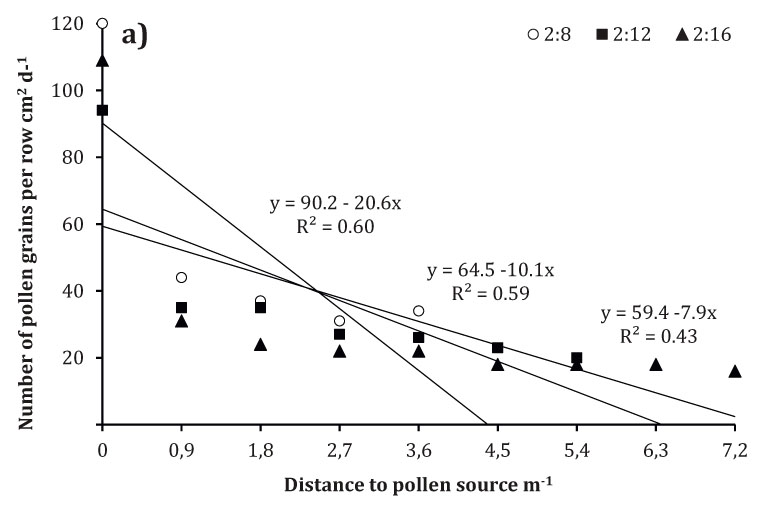Sorghum (Sorghum bicolor) pollen availability and seed set under different proportion male:female plants in Mexican highlands
Keywords:
Sorghum bicolor, floral synchrony, pollen production, pollen availabilityAbstract
The availability of pollen in sorghum (Sorghum bicolor [Moench] L.) production is generally not considered a restrictive factor due to the sorghum self-pollination process. However, during the cross pollination process restrictions could play a role that depends on the distance of the pollen source, the proportion of male to female plants and the sowing date. The objective of this experiment was to establish the relationship between pollen production, deposition and season variations in seed set under different proportion male:female rows. The A9/B9-line was sowed on May 3, June 10, 2005, with the proportions: 2:4, 2:6 andon April 3, 2006 with proportions of 2:12 and 2:16 in Montecillo, State of Mexico. In isolines, number of flowers per panicle was measured at the ending of flowering. During all the flowering period, pollen production was quantified in male line and pollen deposition on female line rows using passive traps. During harvest the length of panicle was measured, quantified by the number of seeds per panicle and seed set was estimated. The pollen availability, synchrony floral, duration of phenological stage and seed production were influenced by sowing date and varied with the male and female rows. Precocity was observed in A9 female isoline more than B9-male line in three sowing dates. Number of pollen grains and seeds declined proportionally with increasing distance from the pollen source, but the rate was different for each proportion. The pollination was associated more to the size of pollen source and its dispersion than with population of female plants.
Downloads

Downloads
Published
How to Cite
Issue
Section
License
Aquellos autores/as que tengan publicaciones con esta revista, aceptan las Políticas Editoriales.










.jpg)




